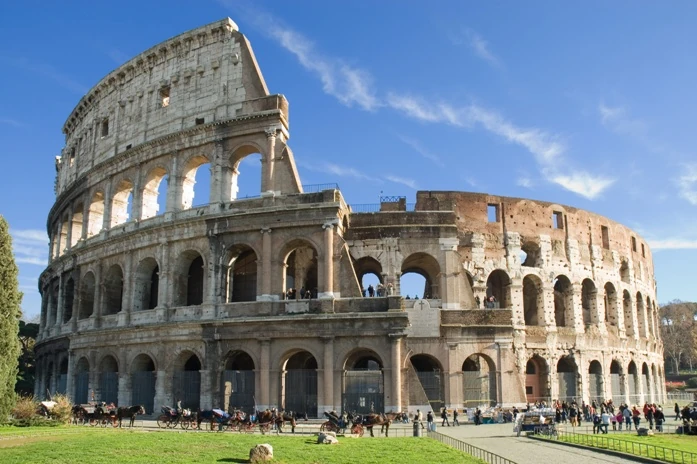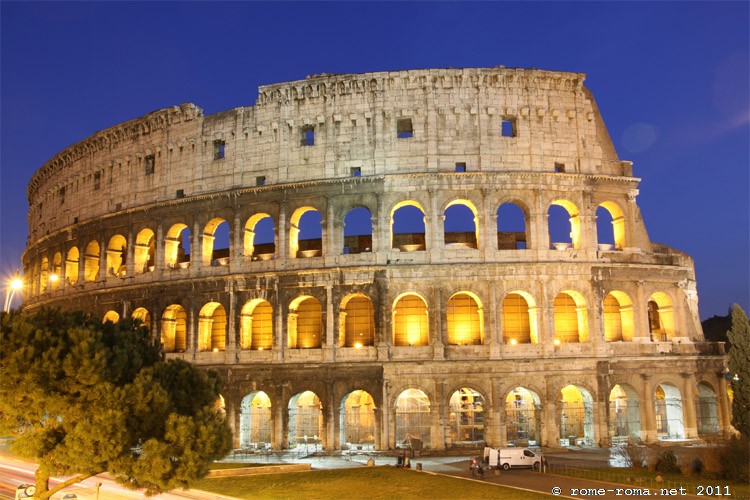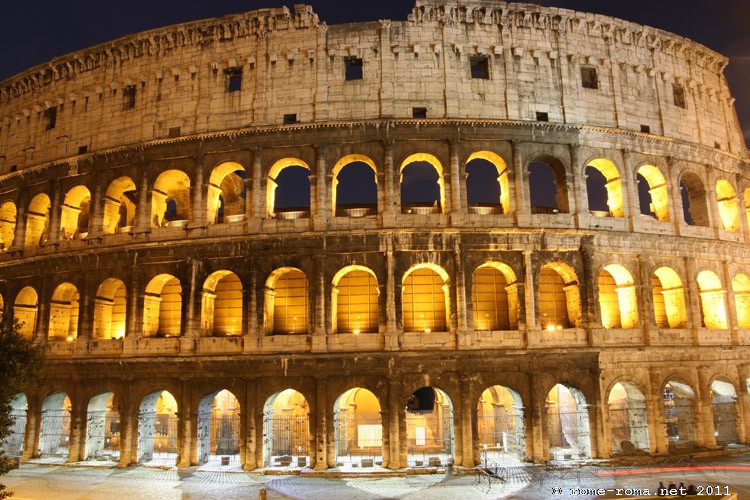The Coliseum is a place to visit at least once in life.
Voted by 90 million people the Colosseum was on the list of the New Wonders of the World in response to the initiative launched in 2007 by B. Weber, evaluated by a panel of experts at whose head there was the former Director General of UNESCO, Federico Mayor Spanish.
A masterpiece of incomparable value, loved by the Romans and the world.
The Flavian Amphitheatre, named after the old stadium was built by Emperor Vespasian in the year 72 AD, but was only inaugurated by Titus in the year 80 after J.- C. It is found in the archeological center of Rome.
The Coliseum, whose name comes from a colossal statue, was the place where took place the shows and public games of ancient Rome.
Famous gladiatorial combats generally slaves or prisoners of war, who fought with ferocity and courage to win freedom. But here is also going on hunting parties of exotic species, fights between animals, games and acrobatics and performances of great battles. The games were held in arenas, inside the Colosseum, with very sophisticated set designs made possible by machines and stage tricks that, as in modern theaters, allowed to quickly change the "scene" with a system pulleys, elevators, and floor openings.
Spectacular were also the "naumachies", representatives show bloody naval battles in artificial ponds. The first naumachies were those of Julius Caesar who first proposed this unique form of entertainment, but it has Titus who organized them for the first time, inside the Coliseum arenas, artificially fed by a water system that enabled channel water inside and outside arenas.
The Colosseum was the place where they held public executions of criminals but was never the scene of massacres as Christians are told in some books and movies.
This imposing work is the best expression of the genius of the ancient Romans. Innovation compared to the Greek theater is in the structure "in the round" with the arena completely surrounded by the cave, able to accommodate many viewers.
The height of the outer wall is 52 meters, the outer wall consisted of three levels of 80 arcades and contained 70,000 places: figures that show the grandeur of this monument, a symbol of Rome, now as before.
TO HAVE
The Colosseum is still the largest amphitheater in the world and represents a unique testimony to the skill of building material Romans. It is an entirely visitable seat, events celebrating the history of ancient Rome.
10:46 ص | 0
التعليقات | أكمل قراءة الموضوع


































